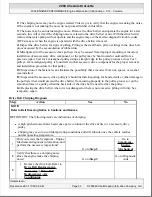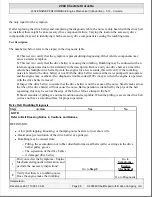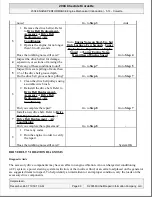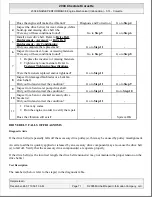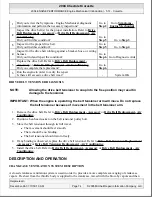
1
1. Operate the vehicle until it reaches normal operating temperature.
2. Park the vehicle on a level surface, over a large sheet of paper or other
clean surface.
3. Wait 15 minutes.
4. Check for drippings.
Are drippings present?
Go to
Step 2
System
OK
2
Can you identify the type of fluid and the approximate location of the leak?
Go to
Step
10
Go to
Step 3
3
1. Visually inspect the suspected area. Use a small mirror to assist in looking
at hard to see areas.
2. Check for leaks at the following locations:
z
Sealing surfaces
z
Fittings
z
Cracked or damaged components
Can you identify the type of fluid and the approximate location of the leak?
Go to
Step
10
Go to
Step 4
4
1. Completely clean the entire engine and surrounding components.
2. Operate the vehicle for several kilometers - miles at normal operating
temperature and at varying speeds.
3. Park the vehicle on a level surface, over a large sheet of paper or other
clean surface.
4. Wait 15 minutes.
5. Identify the type of fluid, and the approximate location of the leak.
Can you identify the type of fluid and the approximate location of the leak?
Go to
Step
10
Go to
Step 5
5
1. Visually inspect the suspected area. Use a small mirror to assist in looking
at hard to see areas.
2. Check for leaks at the following locations:
z
Sealing surfaces
z
Fittings
z
Cracked or damaged components
Can you identify the type of fluid and the approximate location of the leak?
Go to
Step
10
Go to
Step 6
6
1. Completely clean the entire engine and surrounding components.
2. Apply an aerosol-type powder, baby powder, foot powder, etc., to the
suspected area.
3. Operate the vehicle for several kilometers (miles) at normal operating
temperature and at varying speeds.
2004 Chevrolet Corvette
2004 ENGINE PERFORMANCE Engine Mechanical (Introduction) - 5.7L - Corvette
Helpmelearn
December-24-07 10:50:09 AM
Page 59
© 2005 Mitchell Repair Information Company, LLC.


















